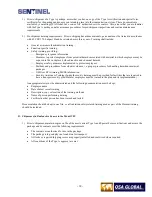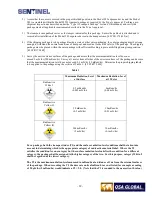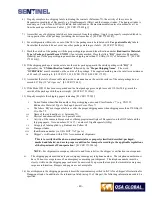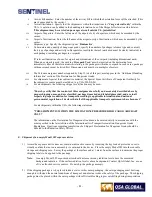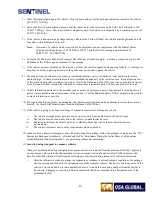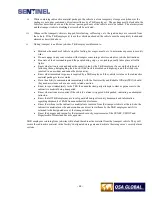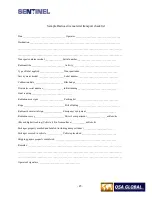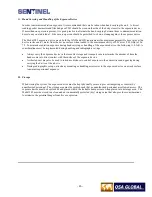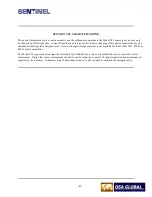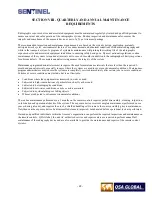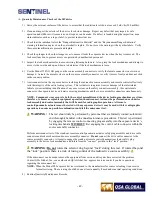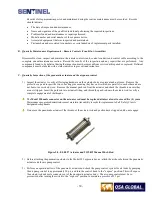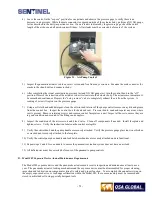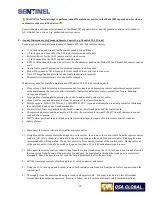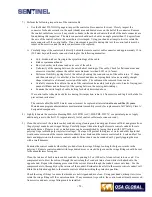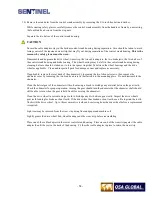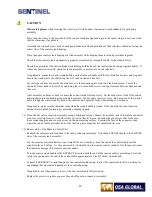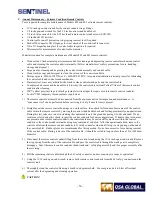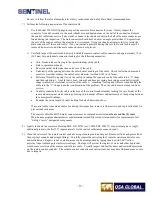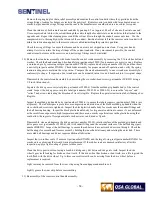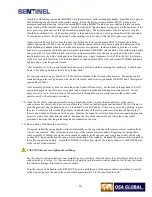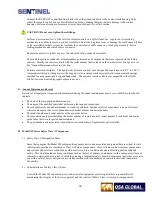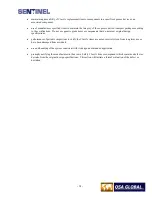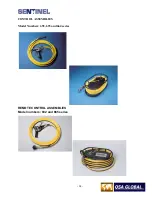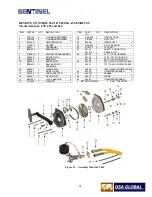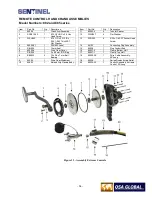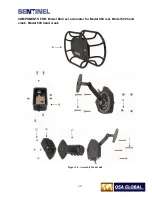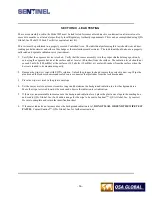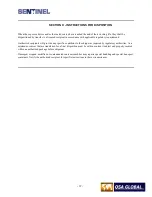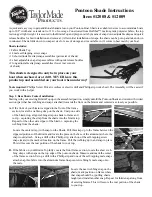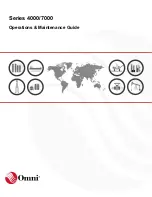
- 52 -
WARNING: Never attempt to perform Annual Maintenance service to the Model 989 exposure device when a
radioactive source is in the device.
Source changing and annual maintenance of the Model 989 exposure device and the pneumatic actuators is limited to
QSA Global, Inc. or one of its’ authorized service centers.
E.
Annual Maintenance for Standard Remote Controls (e.g. Models 692, 693, 664)
Tools required for complete maintenance of Models 692, 693, 664 remote controls:
•
11/16 inch open-end wrench for the control conduit swage fittings.
•
1/2-inch open-end wrench for the 5/16 inch control crank handle bolt.
•
Slot screwdriver for the 10-32 remote control crank screws.
•
3/8 inch wrench for the 10-32 control crank stop nuts.
•
0.050 in Allen wrench for the 4-40 set screw on the odometer knob on the Model 693 and Model 664 remote control
units.
•
Control cable run-off prevention (stop) spring removal tool if required.
•
Model 550 connector NO GO gauge for wear check of the control cable connector.
•
X4 to X7 magnification glass for control cable inspection if required.
•
Micrometer for measurement of control cable diameter.
Materials required for complete maintenance of Models 692, 693, 664 remote controls:
•
Clean solvent: fresh mineral spirits recommended for cleaning and degreasing remote control mechanism, control
cable and cleaning the control conduits internally. (Follow manufacturer’s safety precautions for use, handling,
storage and disposal.)
•
Large pan for cleaning and degreasing the control crank assembly and control cable.
•
Clean lint-free rags and detergent to clean the exterior of the control conduits.
•
Mil-spec grease, MIL-G-23827B (or C), MIL-PRF-23827C (or equivalent radiation resistant grease) for lubricating
the control cable and control crank mechanism.
•
Stainless steel, brass or synthetic bristle brush to clean control crank parts and the control cable.
•
Compressed air source and hand nozzle to blow dry the control cable internal Teflon™ liner of the remote control
conduits after cleaning.
•
3M™ yellow polyvinyl tape (or black polyvinyl electrical tape) for repair of cuts in remote control conduits.
•
Safety glasses.
1)
Disconnect the remote control unit from the exposure device.
2)
Straighten out the remote control housings on a work surface, then remove the control cable from the remote control
conduits (661 safety connector side) until it stops (a stop spring on the end of the control cable). Rubber gloves are
recommended for this operation. Do not use excessive force during removal of the control cable. During removal
of the control cable, it should be coiled in loops no less than a 12 in (305 mm) diameter and secure.
3)
Disconnect the remote control conduit fitting from the control crank using the 11/16 inch open-end wrench. Remove
the stop spring from the end of the control cable, and pass the control cable through the crank gear to completely
disengage. Label the remote control conduits for proper assembly after the servicing.
4)
Pull the remaining control cable through the 661 safety connector and secure.
5)
Using the 11/16 inch open-end wrench, remove both remote control conduits from the 661 safety connector and the
control crank.
6)
Thoroughly clean the control cable using a brush in a degreaser bath. Use compressed air to blow off residual
solvent after the degreasing operation. Be sure to follow the solvent manufacturer's safety recommendations
Summary of Contents for 989
Page 1: ...MAN 037 October 2017 ...

